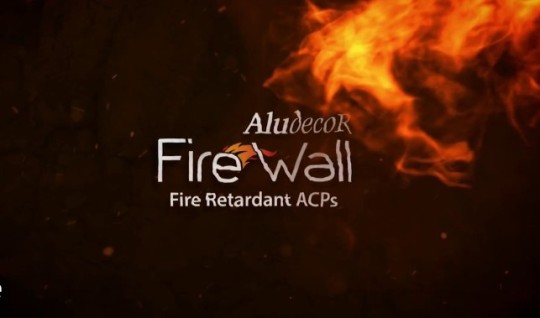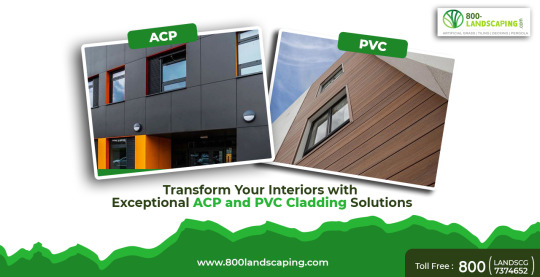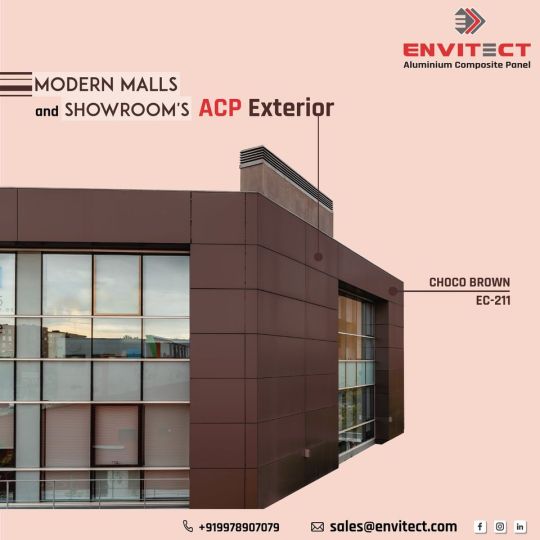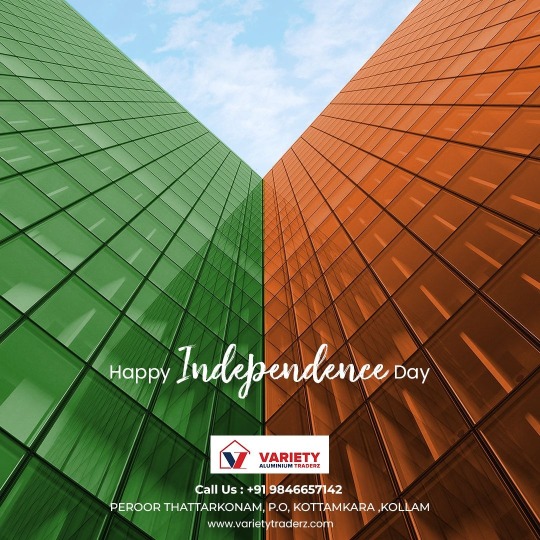#acpcladding
Text
HPL Cladding: Elevating Modern Architecture with Resilience and Design Versatility
HPL cladding, short for High-Pressure Laminate cladding, has emerged as a prominent player in modern construction, offering a blend of durability and design flexibility. This article explores the evolution, advantages, types, materials, installation process, maintenance, applications, innovations, challenges, costs, future trends, and real-life case studies of HPL cladding.

Historical Evolution
Origins and Early Use
HPL cladding's journey began in the mid-20th century, initially finding applications in commercial and industrial settings. The need for a material that could withstand diverse environmental conditions while providing a customizable aesthetic led to the development of High-Pressure Laminate.
Evolution of Materials and Design
Over time, HPL cladding has evolved with advancements in materials and design techniques. From traditional HPL panels to compact and digital variants, the evolution reflects a commitment to meeting the diverse needs of modern architecture.
Advantages of HPL Cladding
Durability and Resilience
One of the standout features of HPL cladding is its durability. High-Pressure Laminate panels are engineered to withstand harsh weather conditions, UV exposure, and physical impact, ensuring long-lasting performance.
Design Versatility
HPL cladding offers unparalleled design versatility. The material can mimic various textures, patterns, and finishes, providing architects and designers with a broad palette to express their creative visions.
Low Maintenance Requirements
Unlike some traditional building materials, HPL cladding boasts low maintenance requirements. The surface is resistant to stains, scratches, and fading, reducing the need for frequent upkeep.
Types of HPL Cladding
Traditional HPL
Traditional HPL represents the foundational variant, known for its balance between cost and performance. It is widely used in commercial and residential projects, providing a classic and timeless aesthetic.
Compact HPL
Compact HPL is a denser variant, suitable for applications that demand increased impact resistance. It is commonly used in high-traffic areas and exterior applications where resilience is paramount.
Digital HPL
Digital HPL incorporates advanced printing technologies, allowing for intricate patterns, images, or branding to be directly applied to the cladding surface. This variant opens up new possibilities for customization in design.
Materials Used in HPL Cladding
High-Pressure Laminate (HPL)
The core component of HPL cladding, High-Pressure Laminate, is created by layering sheets of paper or fabric impregnated with resin. These layers undergo high-pressure compression to form a robust and resilient material.
Core Materials
The choice of core material in HPL cladding influences factors such as density, impact resistance, and overall strength. Common core materials include kraft paper and fiberglass.
Installation Process
Step-by-Step Guide
Surface Preparation: Ensure a clean and stable surface for HPL attachment.
Frame Installation: Install the supporting frame for the HPL panels.
Panel Attachment: Affix the HPL panels using adhesives or mechanical fasteners.
Sealing: Apply edge sealant to prevent water ingress.
Final Inspections: Conduct thorough checks for proper installation and alignment.
Professional Installation Importance
While DIY projects are popular, professional installation of HPL cladding is crucial. Proper installation ensures the longevity, performance, and safety of the cladding system.
Maintenance of HPL Cladding
Preserving the appearance and functionality of HPL cladding requires regular maintenance.
Cleaning and Care Tips
Gentle Cleaning Solutions: Use mild detergents to clean HPL surfaces.
Avoid Abrasives: Steer clear of abrasive materials that can damage the panels.
Periodic Cleaning Schedule: Establish a routine for periodic cleaning to prevent buildup.
Periodic Inspections
Regular inspections by professionals help identify potential issues early on, ensuring timely repairs and preventing costly damage.
Applications in Architecture
Commercial Spaces
HPL cladding has become a staple in commercial architecture, adorning the exteriors of retail outlets, corporate offices, and hospitality establishments. Its durability and design versatility make it a preferred choice for creating impactful facades.
Educational Institutions
In the realm of educational architecture, HPL cladding finds applications in schools and universities. Its resilience, low maintenance requirements, and customization options contribute to creating aesthetically pleasing and enduring structures.
Innovations in HPL Cladding
The future of HPL cladding is marked by sustainability and technological advancements.
Sustainable Practices
As environmental awareness grows, there is a shift toward sustainable HPL cladding materials and manufacturing processes. This aligns with the broader trend of eco-friendly construction practices.
Technological Enhancements
Integrating technological features into HPL cladding, such as interactive surfaces or integrated lighting, represents a direction where aesthetics and functionality converge.
Challenges and Solutions
Impact Resistance Challenges
While HPL cladding is known for its durability, challenges related to impact resistance exist. Choosing compact HPL or incorporating additional protective measures can address these concerns.
Environmental Considerations
The production and disposal of construction materials, including HPL, contribute to environmental impact. The industry's focus on recyclable materials and sustainable practices aims to minimize this footprint.
Cost Considerations
Investing in HPL cladding involves initial costs, but the long-term benefits often outweigh the expenses.
Initial Investment vs. Long-Term Benefits
The durability, design versatility, and low maintenance requirements associated with HPL cladding make it a sound long-term investment for various architectural projects.
0 notes
Text

!! महा नवमी की शुभकामनाएँ !!
#MahaNavami #महानवमी #maa #ShreeRam #navami #2023 #theflexshop #branding #advertising #uvprinting #Flex_Printing #digital_printing #canopy #standee #Pamphlet #Stamp #Visiting_Card #BillBook #paperbag #corrugated #ACP_sheet_Cladding #neon_light_board #acrylic_letter_board #offset_printing
#digital_printing#offset_printing#printers#printing#screen_printing#theflexshop#flexprinting#3dprinting#acpcladding#acrylicletters
0 notes
Text
Flame-Resistant ACP Cladding: Ensuring Fire Safety with the Right Choice
In a world where buildings stand as iconic expressions of human creativity, the need for safeguarding against fire hazards has never been more paramount. Traditional cladding materials have often posed challenges when it comes to balancing design elegance with fire resilience. However, the advent of fire retardant ACP sheets, marks a turning point in architectural evolution.

Crafted with precision and ingenuity, these acp cladding offer a seamless blend of cutting-edge technology and artistic finesse. The unique composition of fire-resistant aluminium composite panels combines the lightweight advantages of aluminium made with the advanced fire-retardant core. This provides a fusion that not only ensures an impeccable exterior finish but also provides an unparalleled level of fire resistance.
Architects and designers now have the liberty to explore daring designs with acp sheet cladding without compromising on safety. Moreover, the adaptability of the ACP sheets lends itself to an array of creative possibilities, starting from bold facades that capture attention to intricate detailing that oozes elegance. The harmonious collaboration between security and aesthetics has now become the go-to option for architects and designers alike.
Why Choose Flame-Resistant ACP Cladding for Your Commercial Building?
When it comes to enhancing the visual allure and safeguarding the integrity of your commercial property, few choices resonate as powerfully as fire retardant ACP sheets. Offering an exceptional array of benefits, this innovative cladding solution presents a compelling case for architects, designers, and building owners seeking to balance aesthetics with safety.
Uplifting Elegance
The fire retardant acp cladding is a testament to the marriage of aesthetics and security. Its ability to seamlessly integrate with your architectural vision empowers you to craft striking facades and designs that captivate attention without sacrificing fire resistance.
Top-notch Technology
The advanced fire-retardant mineral core woven into the composition gives a cladding solution that is a pinnacle of modern engineering. It showcases a commitment to pushing boundaries, ensuring your building remains at the forefront of safety standards.
Enhancing Creativity
Aluminium composite panels go beyond the regular design limitations. Moreover, the fire retardant ACP sheets cladding grants architects and designers the creative liberty to explore intricate detailing, unconventional patterns, and innovative layouts that speak volumes about your brand identity.
Better Durability
Beyond its fire-resistant attributes, these aluminium panels exhibit exceptional weather resistance and durability due to their aluminium body. This longevity ensures that your commercial space remains an architectural marvel for years to come, reinforcing its value and aesthetics.
Investment for the Future
Most building regulations and safety codes adhere to the fire safety codes so, staying ahead of compliance requirements is essential. By choosing fire-safe acp sheet cladding, you proactively future-proof your investment and mitigate potential risks.
Sustainable Option
With an inherent emphasis on longevity and safety, this cladding solution contributes to sustainability goals by reducing the need for frequent replacements. Its eco-conscious design aligns with responsible construction practices.
Aesthetically Uplifting
From corporate offices to retail spaces, the versatility of flame-resistant ACP cladding extends across various commercial domains. It adapts effortlessly to diverse architectural styles, ensuring a harmonious fit for your vision.
Parting Words
As we stand at the crossroads of a new era in architecture, fire retardant ACP sheets take its place as an emblem of responsible innovation. An inspiration for future, where structures can captivate the eye while steadfastly protecting the lives within. It's not just about building exteriors; it's about building confidence, trust, and a safer tomorrow.
0 notes
Text

Celebrating the joyous festival of Onam! Wishing you all a Happy Onam filled with love, laughter, and prosperity.
Stay in touch with us
📞 098466 57142
👉 https://www.varietytraderz.com/
#HappyOnam#OnamFestival#kerala#Onam2023#OnamCelebration#aluminiumfabrication#AluminiumFabricationWorks#aluminiumfabricators#ACP#ACPCladding#acpcladdingworks#interiordesigner#exteriordesign#homeinterior#officeinteriors#kitcheninteriordesign#homeinteriordesign#officeinteriordesigner#aluminium#cupboardwork#varietyaluminiumtraderz#glassfabrication#glassfabricationwork#interiordesign
0 notes
Text
Transform Your Interiors with Exceptional ACP and PVC Cladding Solutions

sabaa al-najmMarch 14, 2023
ACP and PVC Cladding
If you’re looking to transform your interiors with a modern and stylish look, then ACP and PVC cladding solutions are the way to go. Both ACP and PVC cladding solutions are lightweight, durable, and easy to install. They come in a wide range of colors, textures, and finishes that can give your interiors a unique and sophisticated appearance.
What is ACP Cladding?
ACP stands for Aluminum Composite Panel. It is a lightweight and durable material that consists of two layers of aluminum sheets bonded to a polyethylene core. The aluminum sheets are coated with a high-quality paint finish that provides a smooth and uniform surface. ACP cladding panels are available in a wide range of colors, textures, and finishes, making them a popular choice for interior cladding applications.
ACP cladding panels are easy to install, making them an ideal choice for both residential and commercial interiors. They are lightweight and can easily cut and shaped to fit any design requirement. ACP cladding panels are also weather-resistant and can withstand harsh environmental conditions, making them a long-lasting solution for your interiors.
What is PVC Cladding?
PVC cladding is made from a durable plastic material called Polyvinyl Chloride (PVC). It is lightweight, easy to install, and comes in a wide range of colors, textures, and finishes. PVC cladding is a popular choice for interior wall cladding applications as it is resistant to moisture, fire, and chemicals.
Installing PVC cladding panels is easy, and you can easily cut and shape them to fit any design requirement. Another feature of PVC cladding is lightweight, which makes them easy to handle and install. Maintaining PVC cladding panels is easy as you can clean them with a damp cloth. This makes them a low-maintenance solution for your interiors.
Advantages of ACP and PVC Cladding Solutions
There are several advantages of using ACP and PVC cladding solutions for your interiors. These include:
1. Easy Installation:
ACP and PVC cladding panels are easy to install, making them an ideal choice for both residential and commercial interiors. They can be easily cut and shaped to fit any design requirement, making them a versatile solution for your interiors.
2. Durability:
ACP and PVC cladding panels are durable and long-lasting, making them a cost-effective solution for your interiors. They are weather-resistant and can withstand harsh environmental conditions, ensuring that they maintain their appearance for years to come.
3. Low Maintenance:
ACP and PVC cladding panels are easy to maintain and can be cleaned with a damp cloth. This also makes them a low-maintenance solution for your interiors, saving you time and money in the long run.
4. Versatility:
ACP and PVC cladding panels come in a wide range of colors, textures, and finishes, making them a versatile solution for your interiors. Depending on your design requirements, you can use them to create a modern and sophisticated look or a traditional and classic appearance.
5. Cost-effective:
ACP and PVC cladding panels are cost-effective solutions for your interiors. They are affordable so can save you money on both installation and maintenance costs.
Transform Your Interiors Today
If you’re looking to transform your interiors with a modern and stylish look, then ACP and PVC cladding solutions are the way to go. These solutions offer several advantages, including easy installation, durability, low maintenance, versatility, and cost-effectiveness.
At 800 Landscaping, the best landscaping company in Dubai, we offer exceptional ACP and PVC cladding solutions that can transform your interiors. Our team of experts can help you choose the right cladding solution for your interiors
#ACPandPVCcladdingservices#ACPcladding#acpcladdingcompaniesinuae#bestacpcladdinginstallationindubai#topacpcladdingservicesindubai#acpcladdingsupplier#acpcladdingsuppliersinuae#acpcladdinguae#bestlandscapingcompanyindubai#claddingcompanyinuae#claddinginstallationcompanies#leadingcladdingsuppliersinuae#bestcladdingworkindubai#hardscapingcompanyinUAE#hardscapingservicesindubai#landscapingcompanyinUAE#landscapingcontractorsindubai#bestpvccladdinginstallationindubai#pvcwallcladdinginstallation#topwallcladdingsuppliersinuae#bestresidentiallandscapingindubai#topresidentiallandscapinginuae#outdoordesignersinuae#ACPcladdingexpertsindubai#PVCcladdingexpertsindubai#bestgardeningcompaniesindubai#outdoordesignersindubai#Tophardscapingservicesindubai#1hardscapingservicesinuae
0 notes
Text
ACP sheet manufacturer
ACP is now become perfect solution for modern malls and showroom's exterior.
Please inquire us on +919978907079 or [email protected] for more details.http://envitect.com/

#envitect#acp#aluminumcompositepanel#acpexteriordesign#buildingfacades#buildingmaterial#architecture#facadedesign#acpinterior#Interiordesign#acpsheet#alcopanel#architect#wallcladding#cladding#acpcladding#frgradeacp#buildingexterior#aluminumfabricator#aluminumsheet#aluminumpanel#aluminumextrusion#partitionpanel#Showroom#malls#shoppingmall
1 note
·
View note
Text
ACP cladding is a type of metal panel that is used for exterior walls and roofs. Aludecor is a company that manufactures acp cladding. They have become one of the leading manufacturers in this field. Aludecor provides a wide array of products, including roofing panels, wall panels, and so on. All their products are made from quality materials and come with a warranty to ensure their durability. To know more, visit https://www.aludecor.com/.
0 notes
Link
Want the best cladding option to face the inconsistent harsh weather in tropical areas? Here we describe in detail how Virgo ACP is best for exterior cladding. Read on to know more.
0 notes
Photo

When it comes to aluminium composite panel cladding, you can only trust professionals. At Al Basira, we specialize in ACP cladding work to suit varied space and budget requirements. Our experts will analyze your project and offer suggestions that work best for you. To explore our services and request a custom quote, visit our official website. Let us know if you have any questions to ask, we’d be happy to answer.
0 notes
Text
Structural Glazing: A Transparent Revolution in Modern Architecture
Structural glazing, an architectural marvel, has become synonymous with the modernization of buildings and the evolution of contemporary architecture. This innovative approach involves the use of glass as a structural element, providing not only aesthetic appeal but also contributing to energy efficiency and the integration of natural light. Let's delve into the world of structural glazing, exploring its history, advantages, types, materials, installation process, maintenance, applications, innovations, challenges, costs, future trends, and real-life case studies.

Historical Evolution
Structural glazing traces its roots back to the mid-20th century, with humble beginnings in commercial buildings. The evolution of materials and techniques has transformed it from a functional necessity to a key design element. From the early use of single-pane glass to the development of advanced sealants and adhesives, structural glazing has come a long way.
Advantages of Structural Glazing
Aesthetic Appeal
The seamless integration of glass into building structures provides a sleek and modern aesthetic. Architects and designers leverage structural glazing to create visually stunning facades, offering a transparent and sophisticated look.
Energy Efficiency
Structural glazing contributes to energy efficiency by maximizing natural light, reducing the need for artificial lighting. The insulating properties of modern glass technologies also aid in maintaining optimal indoor temperatures, thereby reducing energy consumption.
Natural Light Integration
One of the standout features of structural glazing is its ability to bring abundant natural light into interior spaces. This not only enhances the overall ambiance but also promotes a healthier and more productive environment.
Types of Structural Glazing Systems
Structural glazing systems come in various forms, each catering to specific architectural needs.
Four-Sided Structural Glazing
This type involves the complete encapsulation of the building facade in glass, creating a fully glazed exterior. It offers unobstructed views and a seamless, continuous glass surface.
Two-Sided Structural Glazing
In this configuration, glass is applied to only two sides of the building, providing a balance between openness and structural support. It is a popular choice for mid-rise buildings and commercial spaces.
Unitized Structural Glazing
Unitized systems involve the assembly of glass units off-site, streamlining the installation process. This approach enhances efficiency and ensures consistent quality.
Materials Used in Structural Glazing
The success of structural glazing relies on the careful selection of materials.
Glass Types
Modern structural glazing utilizes various types of glass, including laminated, tempered, and coated options. Each type offers unique properties, such as enhanced strength, safety, and solar control.
Sealants and Adhesives
The choice of sealants and adhesives is crucial for ensuring the structural integrity of the glazing system. Silicone-based materials are commonly used for their durability and weather resistance.
Installation Process
The installation of structural glazing requires precision and expertise.
Step-by-Step Guide
Surface Preparation: Ensure a clean and stable surface for glass attachment.
Frame Installation: Install the supporting frame for the glass panels.
Glass Attachment: Affix the glass panels using high-quality adhesives.
Sealing: Apply weather-resistant sealants to prevent water ingress.
Final Inspections: Conduct thorough checks for proper installation and alignment.
Importance of Professional Installation
While DIY projects are popular, the installation of structural glazing is best left to professionals. The expertise ensures the longevity and safety of the glazing system.
Maintenance of Structural Glazing
Preserving the pristine appearance and functionality of structural glazing requires regular maintenance.
Cleaning Tips
Gentle Cleaning Solutions: Use mild detergents to clean glass surfaces.
Avoid Abrasives: Steer clear of abrasive materials that can scratch the glass.
Regular Cleaning Schedule: Establish a routine for periodic cleaning to prevent buildup.
Periodic Inspections
Regular inspections by professionals help identify potential issues early on, ensuring timely repairs and preventing costly damage.
Applications in Architecture
Structural glazing has found versatile applications in various architectural settings.
Skyscrapers and High-Rise Buildings
The use of structural glazing in towering structures creates a striking visual impact. It also maximizes natural light intake for the occupants.
Residential Applications
From contemporary homes to luxury estates, structural glazing enhances residential architecture by providing panoramic views and a sense of openness.
Innovations in Structural Glazing
The future of structural glazing is marked by technological advancements.
Smart Glass Technology
Smart glass, capable of adjusting transparency based on external factors, adds a layer of functionality to structural glazing. This innovation enhances privacy and energy efficiency.
Sustainable Practices
The integration of sustainable materials and practices in structural glazing aligns with the growing emphasis on eco-friendly architecture.
Challenges and Solutions
While structural glazing offers numerous benefits, it comes with its set of challenges.
Durability Concerns
Exposure to harsh weather conditions and structural stresses can pose durability challenges. Regular maintenance and high-quality materials mitigate these concerns.
Climate Adaptation
Structural glazing systems need to adapt to diverse climates. Customization and material selection play a crucial role in ensuring longevity in different environmental conditions.
Cost Considerations
Investing in structural glazing involves initial costs, but the long-term benefits often outweigh the expenses.
Initial Investment vs. Long-Term Benefits
The aesthetic appeal, energy savings, and increased property value make structural glazing a worthwhile long-term investment.
Future Trends in Structural Glazing
The future promises exciting developments in the field of structural glazing.
0 notes
Photo

May Guru Govind Singh Ji Give You,The Courage And Strength To Fight Evil,And Always Stand By The Side Of Truth.Happy Guru Gobind Singh Ji Jayanti!🙇🙏
#gurugobindsinghjayanti #GuruGobindSinghJi #theflexshop #branding #acrylic #prints #ACPCladding #acrylicletters #3D_Printing #uvprinting #Flex_Printing #printing #digitalprinting #screenprinting #offset_printing #print_production_house #outdooradvertising #glow_sign_board #canopy #standee #Pamphlet #Stamp #neon
Visit our place for your Branding & Advertising.
The Flex Shop - Print Production House
85, Talab Rd, ITI chowk, Opp. MCF office, Old Faridabad, Haryana 121002
https://g.page/the-flex-shop?share
Also, Share with your Friends and Family !!
2 notes
·
View notes
Photo

We are Leading ACP Cladding Manufacturing Company in UAE. RMK Industries Offer you Range of reliable, secure and high performance acp cladding solutions. Visit us
0 notes
Text

Celebrating freedom, unity, and the spirit of our nation. Happy Independence Day!
Stay in touch with us
📞 098466 57142
👉 https://www.varietytraderz.com/
#IndependenceDay#August15#aluminiumfabrication#AluminiumFabricationWorks#aluminiumfabricators#ACP#ACPCladding#acpcladdingworks#interiordesigner#exteriordesign#homeinterior#officeinteriors#kitcheninteriordesign#kitcheninteriordesigners#homeinteriordesign#officeinteriordesigner#aluminium#cupboardwork#varietyaluminiumtraderz#glassfabrication#glassfabricationwork#interiordesign
0 notes
Text
Transform Your Interiors with Exceptional ACP and PVC Cladding Solutions
Revamp your interiors with our premium ACP and PVC cladding solutions. Discover our exceptional range and get a free quote! Call 055 380 5148
#ACPandPVCcladdingservices#ACPcladding#acpcladdingcompaniesinuae#bestacpcladdinginstallationindubai#topacpcladdingservicesindubai#acpcladdingsupplier#acpcladdingsuppliersinuae#acpcladdinguae#bestlandscapingcompanyindubai#claddingcompanyinuae#claddinginstallationcompanies#leadingcladdingsuppliersinuae#bestcladdingworkindubai#hardscapingcompanyinUAE#hardscapingservicesindubai#landscapingcompanyinUAE#landscapingcontractorsindubai#bestpvccladdinginstallationindubai#pvcwallcladdinginstallation#topwallcladdingsuppliersinuae#bestresidentiallandscapingindubai#topresidentiallandscapinginuae#outdoordesignersinuae#ACPcladdingexpertsindubai#PVCcladdingexpertsindubai#bestgardeningcompaniesindubai#outdoordesignersindubai#Tophardscapingservicesindubai#1hardscapingservicesinuae
0 notes
Text
ACP Cladding Price In Lucknow
ACP Cladding Price In Lucknow

ACP is mainly used for external and internal architectural cladding or partitions, false ceilings, signage, machine coverings, container construction, etc. Applications of ACP are not limited to external building cladding, but can also be used in any form of cladding such as partitions, false ceilings, etc. Aluminium composite panels (ACP), made of aluminium composite material (ACM), are flat…
View On WordPress
0 notes
Video
youtube
ACP Cornor Folding
0 notes